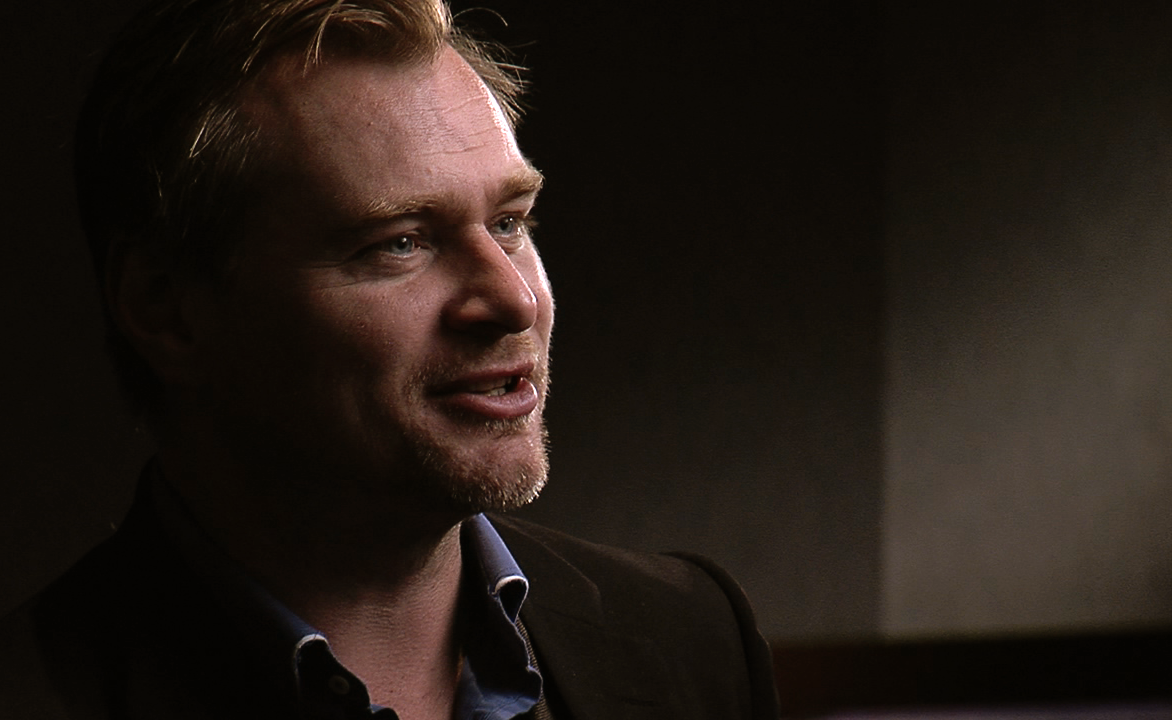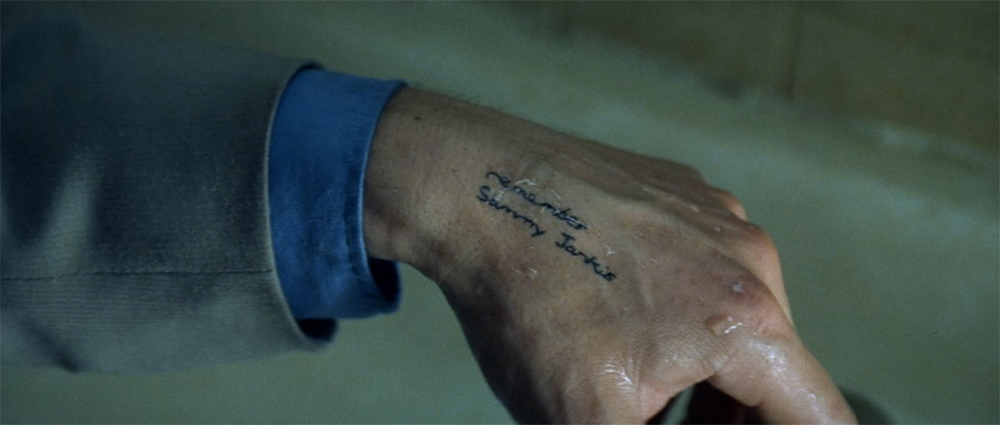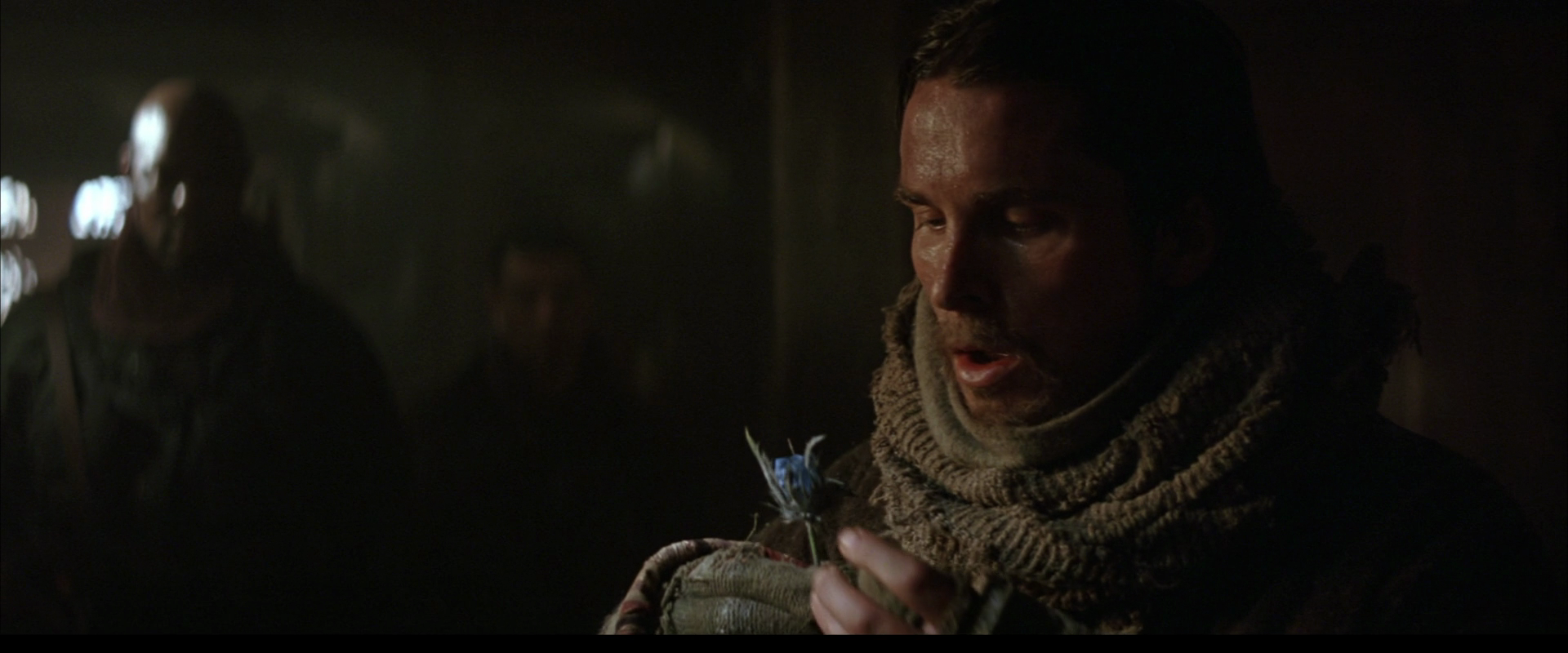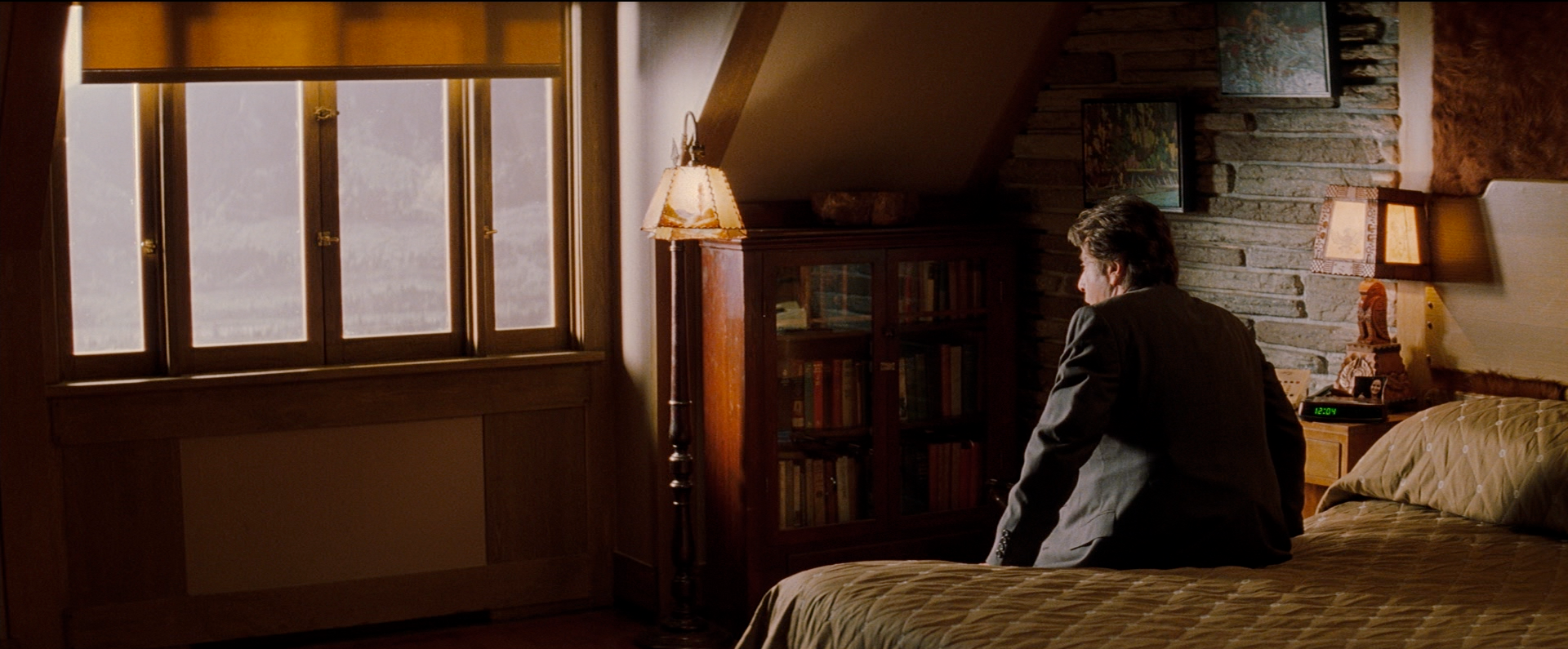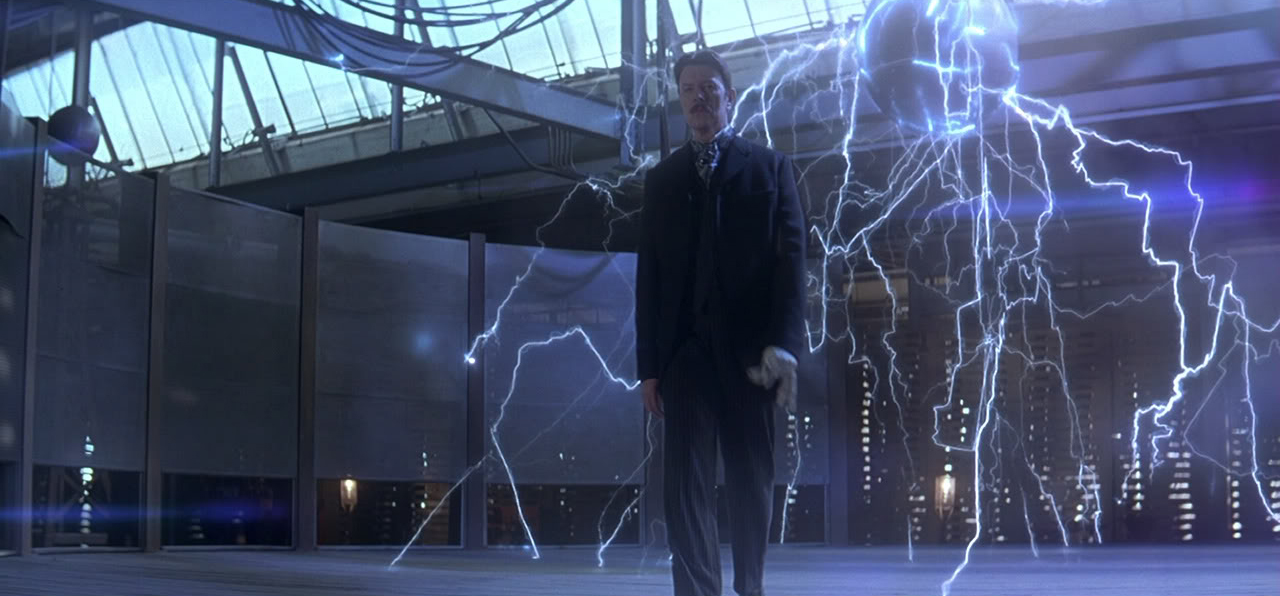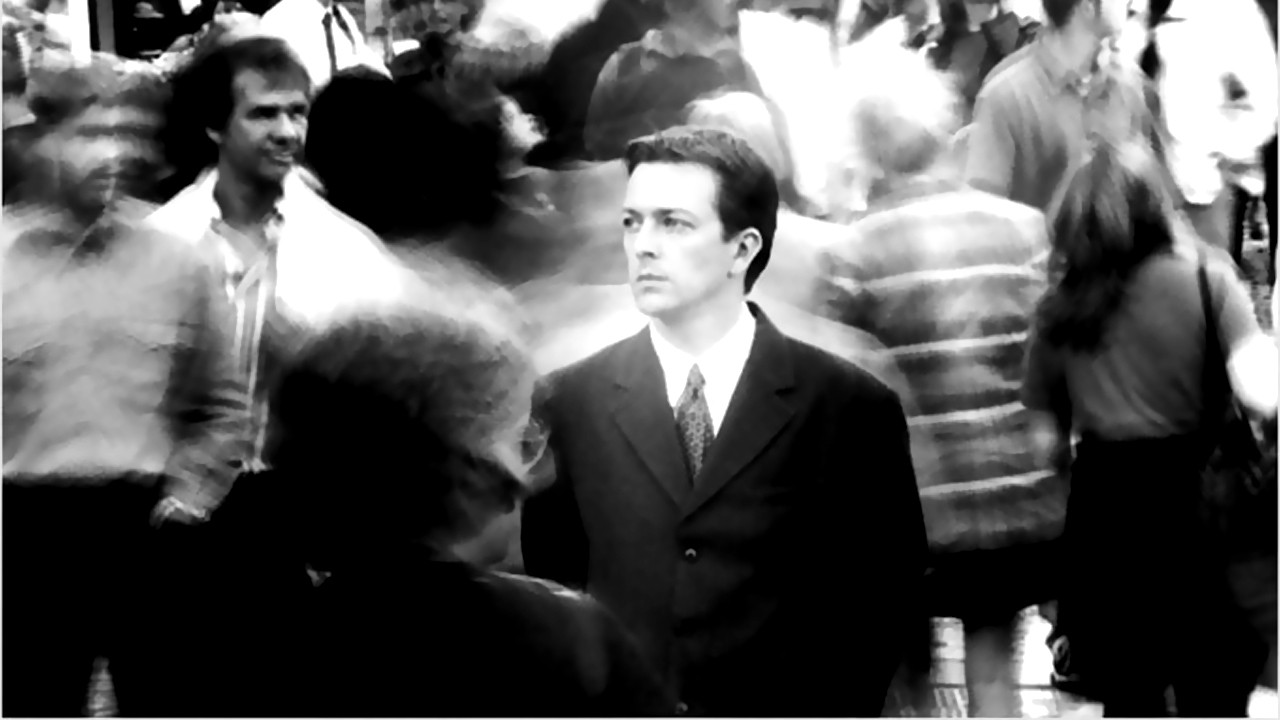Top to Bottom: Christopher Nolan
Top to Bottom looks at a filmmakers career and assesses each film from most to least essential. That doesn’t make the less essential selections “bad”, just less defining on a grander scheme. This is a guide to a director’s evolution (or degradation) and where newcomers should begin, or fans revisit.
Today we evaluate Christopher Nolan, one of the most respected blockbuster directors active today.
Christopher Nolan is one of the most prominent Hollywood directors who emerged the dawn of the 00’s. It’s hardly an overstatement to say that much of the current mainstream film landscape has been shaped by what Christopher Nolan did in (so far) short career. Emerging as one of the most prominent and iconic Hollywood filmmakers at the turn of the century Nolan has graduated from promising indie thrillers to some of the most ambitious, expensive, and profitable films of all time. While there is a whole echelon of filmmakers equipped with the skills to manage a production on the scale of a typical Nolan film, there are few who have the same keen sense of style and flair to make unorthodox decisions to turn a tentpole studio film into an original, bizarre thriller.
Developing a distinct style early on helped Nolan solidify his aesthetic and authorial stamp; one of Nolan’s greatest talents is his ability to craft complicated thriller stories that achieve mass appeal without sacrificing quality – a trait that nearly every writer and director struggles with, but Nolan makes it look easy. Of course, he is not the first filmmaker to master such a technique, one of Nolan’s cited influences, and the director he most resembles is Alfred Hitchcock, the “master of suspense” whose sophisticated mysteries were constantly able to capture audience imagination time and time again. Both filmmakers have used inventive set pieces, bruised heroes, carefully placed exposition, and misleading twists to hook and capture their audience. But while Hitchcock almost always unraveled his bizarre mysteries, offering a perfectly reasonable explanation of everything, Nolan is much more content to allow his stories to slide into other genres and let mysteries linger. Yet, like Hitchcock, Nolan’s tendency to misdirect his audience and subvert blockbuster conventions have always managed to stay within the cultural zeitgeist in terms of popular interest. Nolan’s films, as unique as they can be, have always been easily marketable despite their secretive nature or complex synopses. Major studios have backed directors with their own agendas before, like David Lynch with Dune, or Terrence Malick with The Thin Red Line, but these visions were impossible to sum up in a single TV spot; Nolan follows the Hitchcock rulebook: the less people know, the more they’ll want to know.
Trends
Established directors typically develop trends in their approach, whether that be in the writing, the dialogue, the shots, themes or the pacing. Nolan is unusual in that several trends in his films trace back to his debut which may provide insight as to why his films now are so confident and balanced.
- Non-linear plot structure. Evident in nearly all of Nolan’s films, in fact, this is essentially his directorial stamp. Nolan always uses this technique to complicate the script, using it to dramatically reveal the origin of tension between characters when it is revealed in the third act. It is a complex way to generate mystery in setting and character and encourage re-watching the film. (Following, Memento, Batman Begins, The Prestige, Inception)
- Twist ending. Nolan’s tight and complicated plot structures usually build towards a final reveal that forces the audience to re-evaluate everything that came before. Twist endings often diminish the importance of earlier events, render events or actions earlier in the film illogical, or can destroy mystery. Nolan’s finale’s generally support the film rather than reduce it thanks to the non-linear plotting, although the value of The Prestige ending is debatable among fans. Typically, after a non-Batman Nolan film, there is heated discussion among viewers as to the “new” meaning of the entire film. This is a good thing. (Following, Memento, The Prestige, Inception)
- Manipulative female lead. Nolan’s leading women are always strong and equal against their male counterparts, but they are usually antagonistic who seek to resist the efforts of the male protagonist. Nolan departs from this theme in his Batman films where Rachel Dawes acts as Bruce Wayne’s moral compass, reminding him of justice when he slips too far into his persona. As well, Insomnia, his other adapted screenplay, focuses on a morally righteous cop. His original scripts have malicious females, but they are never misogynistic. (Following, Memento, Inception)
- Anti-social, morally-questionable male protagonist. Every one of Nolan’s films develops its protagonist as a sympathetic, flawed man whose past demons haunt his actions during the film. Nolan’s protagonists aren’t popular guys, often alienating themselves from close connections and the public at large. They are typically driven by a secret selfishness. (Following, Memento, Insomnia, Batman Begins, The Prestige, The Dark Knight, Inception)
- Obsession. The anti-social aspect of his protagonists has to do with their infatuation with something. They are so blinded by their obsession that they create their own conflicts, often leading to a form of identity crisis and becoming victims of blackmail. (Following, Memento, Insomnia, Batman Begins, The Prestige, The Dark Knight, Inception)
- Corrupt mentor/protege relationship – Nolan builds a foundation of trust and allegiance between characters, only to pull the rug out from under them as their true motivations become clear, and are typically at odds with each other. (Following, Insomnia, Batman Begins, Inception)
- Rules. Nolan’s films are often dictated by specific rules either in their universe, or rules that characters have for themselves. Breaking rules are often disastrous. (Following, Memento, Batman Begins, The Prestige, The Dark Knight, Inception)
- Vigilante Justice. To Nolan, upholding authority is ultimately the responsibility the protagonist. This element is what makes Nolan’s films easily marketable, because his characters seek action, although they are always haunted by the consequences of those decisions. Typically this stems from the actual police being extremely corrupt or inadequate as seen in Insomnia, which doesn’t use the vigilante theme. (Memento, Batman Begins, The Prestige, The Dark Knight.)
1
Memento (2000)
Although Nolan has since escalated towards multi-million dollar action films, his first film still remains his best. It is rare, almost unheard of, for a directorial debut to be as strong as Memento. Typically, a promising director and/or writer will debut with a film of great concepts and ambitious creativity but with amateur mistakes that correct themselves over a prosperous career. Not so for Christopher Nolan who teamed with his brother Jonathan to create an air-tight script that forcible breaks storytelling conventions, yet amazingly, also adheres to the same conventions. The film moves in reverse following a man with short-term memory loss. This bizarre structure not only simulates the sensation of not remembering what just happened, but it inverts the narrative to having the plot twist at the beginning of the story, rather than the end. At the same time, knowing the end creates a twist in the beginning, giving the film a strong symmetry.
Nolan’s plotting and sharp dialogue make a strong presence in Memento and echo things to come in his later films. Memento is also the first time Nolan truly nails one of the most important signatures of his aesthetic: the blink-and-you’ll-miss-it twisting labyrinth of a plot which demands the viewer give 110% attention to the film, otherwise you may miss one piece of the puzzle, and then the whole can not be completed.
2
The Dark Knight (2008)
Whether Nolan chooses to admit it or not, The Dark Knight became the essential superhero story of our time because it stands as its own story, but doubles as commentary on America in the 00’s. Nolan uses Batman’s archenemy, The Joker to maximum potential by making him Batman’s true antithesis as well as a symbol for fear. In a move that has somehow eluded almost all other superhero films, The Joker sought no world domination nor political revenge, he merely wanted chaos for chaos’ sake. Contrasting the focused motives and laws of Batman’s code, The Joker had nothing to live by or for, seeing only harmonious equality in chaos and destruction, using gang money and exploiting Batman only as rationale for his actions. As if this villain needed to be more terrifying, the Nolan brothers and co-writer David S. Goyer deny the audience The Joker’s backstory, eliminating any hope of humanizing him or allowing us to understand his motivations or how he got those scars – The Joker only tells mixed lies about their origin, continuing to confuse and alienate the rational people around him. Batman himself, like any superhero, acts as the hero of the people who vanquishes evil, and follows a more standard character arc of questioning his role as a vigilante and whether he’s doing more bad than good. The film uses this standard-fare development to end the film on a solemn note where the public rejects their former saviour that turns the typically glorious superhero archetype into a tragedy.
Ledger’s Joker further separates himself from the typical superhero villain by having more in common with a real world serial killer than a character in a comic. Similar to American psychopaths Henry Lee Lucas or Ted Bundy, The Joker carries the visible scars and ticks of a person who has lived an arduous life, but in many ways he is more of a phantom than a person at all. With a history of abuse as seen on his face, The Joker has manifested a logic that only applies to himself, his rise to crime mastermind must, logically, have had simpler beginnings in shop lifting and petty crime, and therefore some prior conviction to tie him to. But this is where The Joker differs from the classic serial killer – he is a complete unknown even to police. Without any name, he has only his face to identify himself, which like Batman, is a symbol, and a source of fear. His character splits away from both supervillains and serial killers, taking only their most barbaric elements, making him some other kind of monster entirely.
Not having much in the ways of professional training for action films, Nolan’s weakest elements of the film are his action sequences which are often choppy, confusing, and end abruptly. The film could lose a bit of fat with many plot threads running in several directions, for example the only tangibly related Hong Kong subplot could be completely exorcised without losing anything from the rest of the film. Regardless, The Dark Knight stands and will most likely be remembered as the peak of the comic-book-adaptation phenomenon that has captivated today’s audiences. The film’s sphere of influence and dark tone immediately influenced and altered nearly every comic adaptation after it with diminishing returns; it’s the best film of it’s kind, but also the beginning of the end.
3
Batman Begins (2005)
Nolan’s Batman films are certainly his most formulaic films, they comply to chronologic pacing and don’t have major third act twists. This would be seen as a demerit if they weren’t so brilliant as they are. Less loved than the more popular sequel, Batman Begins is still about as strong as The Dark Knight – it doesn’t have the same social commentary, but it doesn’t need to. This is the Batman that was made for the fans and those who believed that superheroes are indeed sufficient material for mature, dark stories, which up until this point was disputed and comics were largely seen by the general public as juvenile akin to video games. One of the biggest accomplishments of Batman Begins is that it braved and won the uphill battle out of the gutter that the franchise and hero was left in by master-hack Joel Schumacher who turned the character into a high-budget parody equipped with an entire toy-line of accessories and the infamous nipple-suit.
Nolan’s sharp film aesthetic is probably never as promenant as it is here. Smartly depicting the character in a more “realistic” light by taking the idea of “what if a superhero existed in our world?” and applying it to the most logical character – the hero whose only super powers are his incredibly bravery and immense wealth. Each element of Batman’s creation find roots in experimental military equipment and technology, his villains are more mafia thugs than demented super humans, and Gotham City shifts between a pristine urban utopia to a ravaged criminal wasteland. Nolan’s vision of Gotham hits political and social points in wide strokes where he is hyper-critical of big business and an inefficient government who let their people wallow in decay because their political system can’t keep up with crime.
Nolan takes his time building towards the character of Batman by developing his themes of fear and justice, sometimes bludgeoning the audience with them. Largely, the movie is a study of mentor and protege and how the two can grow apart coming from similar roots. Dispelling the notion that too many villains is a deal-breaker, Batman Begins has at least four antagonists but maintains its focus on what is important.
4
Inception (2010)
Hitting all his familiar beats, Inception could have been Nolan’s first flop. A typical conundrum for auteur filmmakers who have a handful of films under their belt and have exhausted all their go-to themes. However, Nolan appropriates elements of his earliest films (Following, Memento) and structures them within an even less coherent timeline. Setting his familiar archetypes within a rigidly constructed dreamscape allows time to move as Nolan sees fit. Creating a world that is completely adjustable to be at the service of the action as well as the story, Inception looks like the slick, high-budget Nolan that we have come to know, but acts in an entirely new way.
Facing greater scrutiny after the massive success of The Dark Knight, Nolan took two years, now his established model for development time on his films, to make a film he had been planning for many years. Inception is an incredibly ambitious and complex concept with such bold strides that the film can’t always support itself. But like any large-scale, complex movie, wrinkles in the logic of the mythology are inevitable, yet Inception dares the audience to analyze and evaluate its detailed rules. While the concept and the world allows Nolan to create some of the more mind-bending, large-scale set pieces ever filmed, it is the closest Nolan has gotten to having his twist and mythology flatline the film. Ultimately, the complex exposition is too vague for viewers to really analyze how the world operates, and what the ending means in relation to the film. There is a lot to take in within Inception, but upon repeat viewings, you are more likely to disregard the logic of the movie than become more enthralled by it.
With that said, the film is Nolan’s most adequate action film to date. Finally understanding a true flow and kinetic momentum to creating action scenes, Nolan backs his set pieces with sci-fi brain candy, resulting in a film that isn’t rocket science, but is certainly much more intellectually ambitious than typical Hollywood blockbusters. The murky details of the Inception dream world often seem to simply be at the service of the insanely inventive action moments which are a marvel in every step of their incarnation: the concept, the effects, the plot integration, and execution.
5
Insomnia (2002)
The dark horse of Nolan’s filmography, Insomnia is his only feature film remake (of a Norwegian film) and is a largely formulaic detective procedural, not containing many of the signature elements of a Nolan film such as the puzzle mystery and twist. Instead, Insomnia is a very meticulously paced thriller that compounds a murder case with a previous cover-up by the protagonist, played by Al Pacino in one of his few excellent late career roles. The tension as both cases begin to unfold is intensified by the film’s setting in Alaska, where the perpetual sunlight sears into Pacino’s mind as he begins to lose grip on his sanity. What could have been a by-the-numbers detective film becomes a solid look into the psyche of an earnest detective betrayed by his own instincts and suffering from it.
Hilary Swank supports Pacino as a morally righteous cop who views Pacino on a pedestal but must choose between idolization or true justice where her inexperience and naive optimism serves as a counter-point to Pacino’s age and pessimism allowing the two characters to gel and find a good balance between two charismatic, scene-stealing actors.
6
The Prestige (2006)
For a director whose mysteries haven’t been bound by genre, The Prestige still remains the most unusual choice for Nolan in terms of it’s setting and content. Set in late 19th century London, Nolan finally lets Christian Bale and Michael Caine out of their American accents in a costume drama mystery mixed with a tinge of science fiction. The Prestige is ambitious in it’s attempt to blend mystery with history by introducing Nikola Tesla into the central story while maintaining Nolan’s signature non-linear narrative puzzle. If anything, The Prestige proves Nolan was not soured by working on a big-budget mainstream film and that his creatively driven Memento self is still actively conjuring up new worlds and mysteries. However, the film also proves that Nolan remains tied to the same elements that have founded his career without expanding much past that point. The Prestige is slow and dialogue heavy with the mysteries unraveling at a calculated pace, much in the same way of Memento. However, while Memento’s twist ending was a major part of the reward of the film, it delivered the revelations in a series of smaller reveals that were timed for maximum effect. The Prestige hinges largely on it’s single twist – how does Bale do the disappearing man trick? The dependance on the twist is a bit too heavy, and ultimately leads to some dissatisfaction in the end. The ending is easy to get over however, since the film is another wonderfully assembled work that takes concentration to follow, and is in some ways more impressive than Memento’s reverse narrative, because it jumps seemingly at random, but of course we know it is not random at all. The film packs Nolan’s signature clean visual aesthetic with a historical fantasyland of steampunk technology.
7
Following (1998)
Nolan’s first film is more a blueprint for his later work than anything. Made independently with friends and colleagues on weekends or whenever they weren’t working, Following is a classic Nolan mind-twist with all his (future) signature elements: non-linear story, manipulative female character, morally-questionable male lead, a poisoned mentor/protege relationship, and a set of rules that govern the “success” of the characters. Following is a strong showcase of what Nolan could do with a bigger budget, and the plot is clever enough, but even at it’s shoestring budget, Following is more predictable and plain than later Nolan works, with that said, the film avoids the pretentious film school indulgences one would expect from a gritty black & white independent feature with such strong themes; instead, Nolan focuses on the pulp energy of his mystery with confidence that his script will keep him above the typical amateur thriller. Fortunately, for him, and for us, it does.

